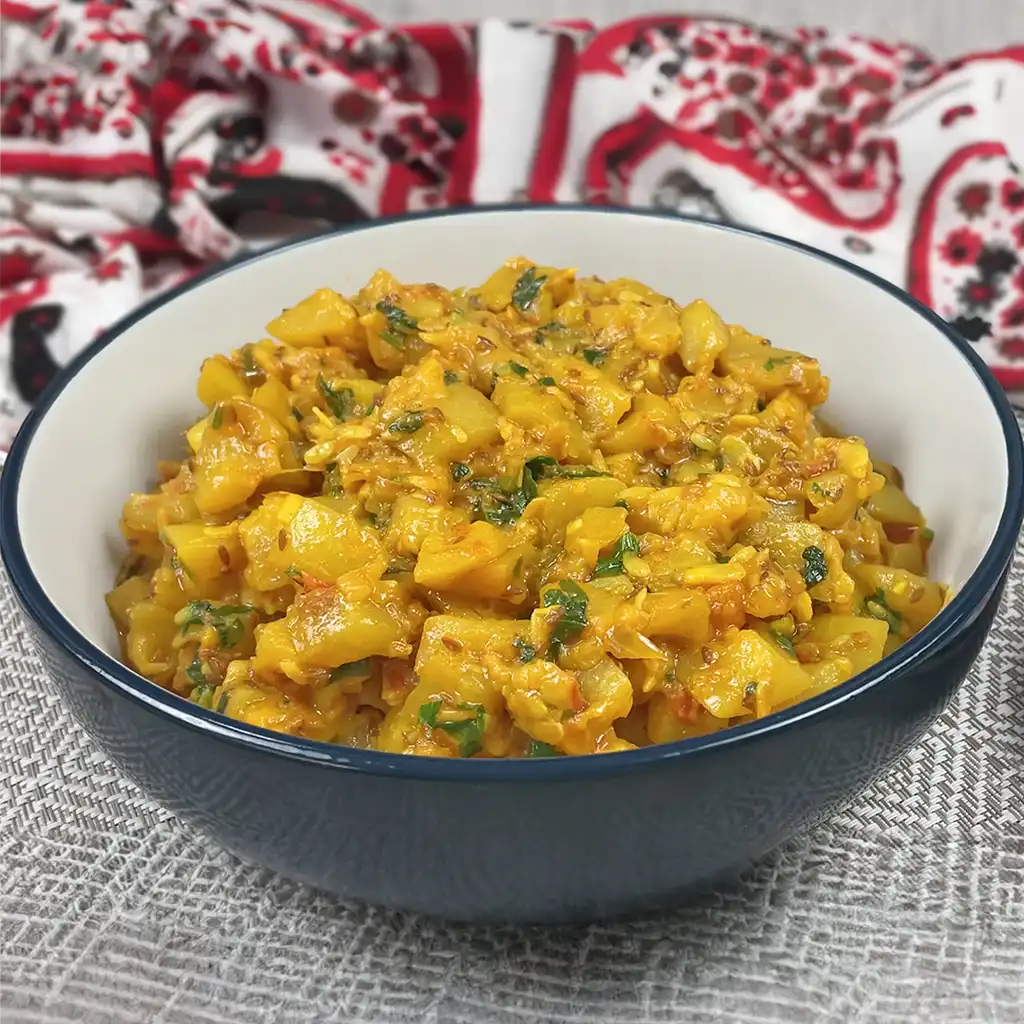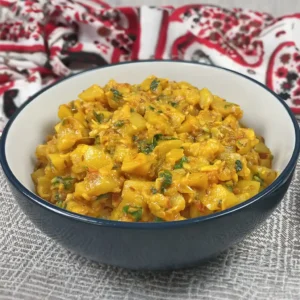
Lauki ki sabzi, a traditional Indian dish, is a delectable way to enjoy bottle gourd, known as lauki in Hindi. This dish boasts a rich history in Indian cuisine, offering a burst of flavors with its blend of spices and vegetables.
Despite its exotic name, this recipe is surprisingly simple to prepare, making it an ideal choice for both beginner and experienced cooks alike.
In this recipe, tender bottle gourd is cooked in a fragrant blend of spices, including garlic paste, cumin seeds, and turmeric powder, lending it a delightful aroma and taste.
The addition of onions and tomatoes adds depth and richness to the dish, while green chilies provide a subtle kick of heat. Finished off with a sprinkle of fresh coriander, this dish is a true celebration of Indian flavors.
Expert Tip: Don’t rush the cooking process; allowing the spices to cook slowly enhances their flavors and yields a more delicious outcome.
Olive Oil: Adds richness and helps in sautéing the spices and vegetables.
Bottle Gourd (Lauki): The star ingredient, known for its mild flavor and tender texture.
Onions: Provide sweetness and depth of flavor to the dish when cooked down.
Tomatoes: Add tanginess and help create a rich gravy.
Garlic Paste: Infuses the dish with aromatic flavor.
Salt: Enhances the taste of the other ingredients.
Chilli Powder: Adds a hint of heat and vibrant color to the dish.
Turmeric Powder (Haldi): Adds a warm, earthy flavor and bright yellow color.
Cumin Seeds (Jeera): Provide a nutty, aromatic flavor to the dish.
Green Chillies: Add heat and a fresh, spicy flavor.
Coriander: Freshens up the dish with its bright, citrusy flavor.
Expert Tip: For added depth of flavor, you can roast the cumin seeds before adding them to the dish.
Expert Tip: Ensure to chop the bottle gourd and other vegetables into uniform bite-sized pieces for even cooking.
Yes, you can substitute bottle gourd with zucchini or squash for a similar texture and taste.
The level of spiciness can be adjusted according to your preference by varying the amount of green chilies and chili powder used.
The dish typically takes around 30 minutes to cook on medium heat, ensuring the bottle gourd is tender and well-incorporated with the spices.
Yes, you can prepare the sabzi in advance and reheat it before serving. However, fresh is always best!
Yes, this dish is entirely vegetarian and vegan-friendly.
Here are some more recipes for you to enjoy! If you my recipes don’t forget to rate and leave a comment.
If you have any recipe suggestions, please do not hesitate to ask me. A great way to stay in contact with me is through Instagram, Facebook, Twitter and YouTube. Don’t forget to tag me @CookwithNabeela in your recipe photos!

Subscribe now to receive my latest recipes directly in your inbox. Stay up-to-date and never miss out!

I love to cook! I want to share with you my favourite, delicious family-friendly recipes. I want to inspire you to create fantastic food for your family every day.
Add your first comment to this post